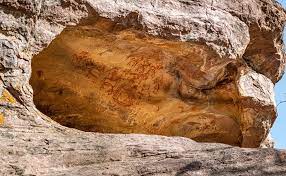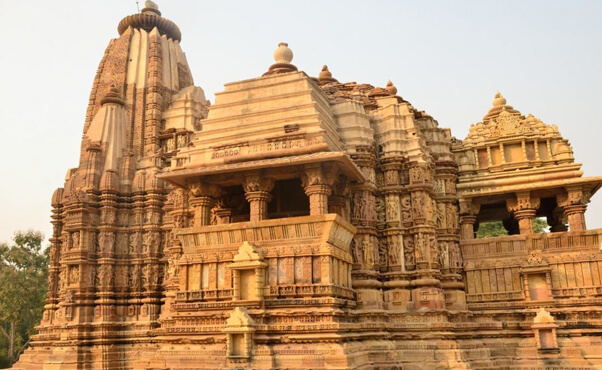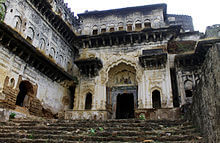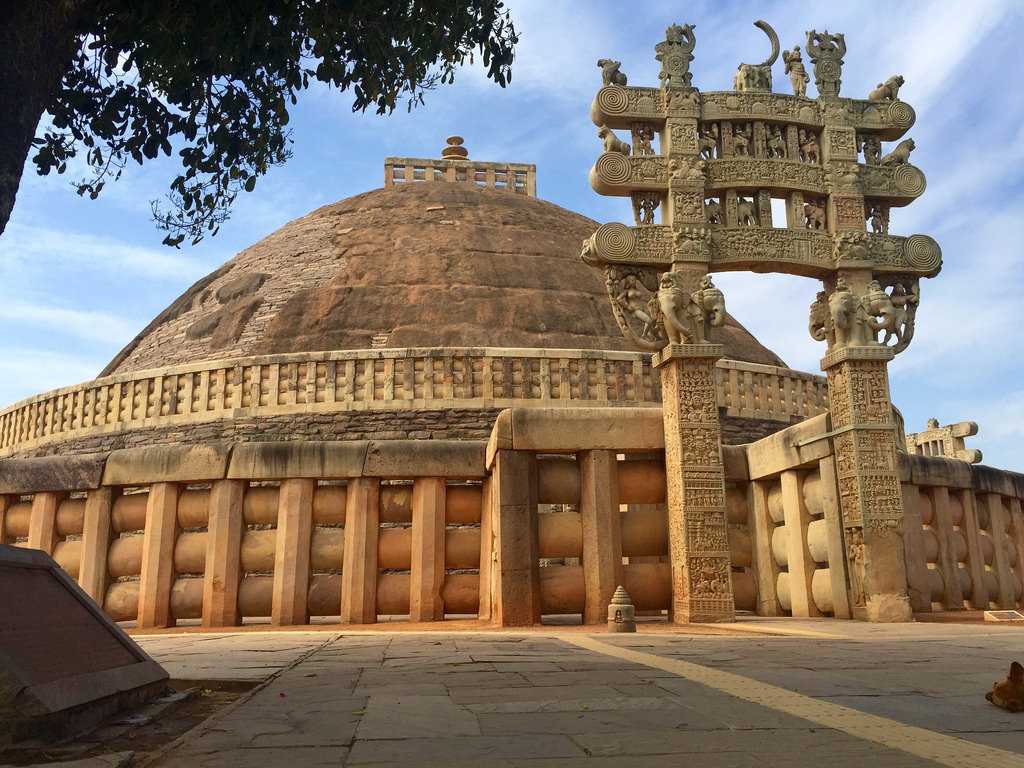- Home
- Madhya Pradesh
- History of India
- History of Madhya Pradesh
History of Madhya Pradesh
History of Madhya Pradesh
Country: India
State: Madhya Pradesh
Capital: Bhopal
Language: Hindi
Major Airports: Bhopal, Indore, Jabalpur, Gwalior, Ujjain, Khajuraho,
Best time to visit: October to March.
Total Area: 308,252 square kilometers
Major Tourism cities: Bhopal, Indore, Gwalior, Ujjain, Raipur, Maheshwar, Mandu, Omkareshwar, Orchha, Pachmarhi, Pench, Sanchi, Chitrakoot, Choral, Bhojpuri, Bandhavgarh, Udayagiri, Amarkantak, Bhimbetka and many more
Major Tourist Attractions: National Parks, Forts, Museum, Tiger Reserves, Waterfalls, Lakes, Temples, Monuments many more
Update on coronavirus in India
Important Links
History of Madhya Pradesh, India is rich and diverse, with a legacy that spans thousands of years. It can be divided into three different stages as ancient, medieval and modern periods. Madhya Pradesh has a rich and ancient history that dates back to the prehistoric era. The region was inhabited by early humans as early as 300,000 years ago. Evidence of this early habitation can be found in the form of rock paintings, stone tools, and other artifacts. Some of the rock paintings, stone and metal shows around the rivers, valleys, and other areas of Madhya Pradesh indicate that the area has been inhabited since prehistoric times.
The region was once home to extensive empires of the Mauryas, Guptas, and Harsha. The medieval period saw the dominance of Rajput's, Mughals, Marathas, and later the British. The Mughals established their firm control over this vast region. Following which Marathas were able to push back the Muslim invaders to extend their supremacy to areas in and around Avanti mahajanapada. The history and culture of Madhya Pradesh are deeply embedded in the magnanimous monuments and sites that spread far and wide across the state. They are the testament to the rich historical legacy and cultural fabric this enchanting place holds.
Ancient Period
- Ancient Period:
- The region of Madhya Pradesh has a deep historical connection dating back to ancient times. It was part of various ancient empires and kingdoms, including the Mauryan and Gupta empires.
- The UNESCO-listed Sanchi Stupa, built during the reign of Emperor Ashoka in the 3rd century BCE, is one of the most significant Buddhist monuments in India.
- The Bhimbetka Rock Shelters is another must-visit historical site. Recognized by UNESCO, these ancient rock shelters display the early traces of human life on the Indian Subcontinent, taking us back to Prehistoric times. These caves show us the evidence of Paleolithic settlements in the state of Madhya Pradesh. Some of the painted pottery
- During the Vedic period (1500-500 BCE), Madhya Pradesh was part of the Avanti kingdom. The Avanti kingdom was one of the most powerful kingdoms in India at the time. It was known for its trade and commerce, as well as its cultural and intellectual achievements. Later Avanti was annexed by Shishunaga into the Magadha Empire. Later the Shishunaga dynasty was overthrown by the Nanda's who were later replaced by the Mauryan.

- Chandragupta Maurya took control of North India around 320 BC. Ashoka, the famous Mauryan emperor, is believed to have ruled over parts of present-day Madhya Pradesh, and his inscriptions can still be found in the region. In the 6th century BCE, Madhya Pradesh became part of the Mauryan Empire. The Mauryan Empire was the first empire to unite most of India under one rule. The Mauryan emperor Ashoka was a great patron of Buddhism, and he built many Buddhist stupas and monasteries in Madhya Pradesh.
- Ujjain: Ujjain was an important city in ancient India, and it was known for its trade and commerce, as well as its astronomical and mathematical achievements. It served as a capital of Avanti Kingdom
- The Satavahana dynasty of the northern Deccan and the Saka dynasty of the Western Satraps fought to take control of Madhya Pradesh during the 1-3 centuries CE.
- The south Indian king Gautamiputra Satakarni of the Satavahana dynasty defeated the Saka rulers and conquered parts of Malwa and Gujarat in the 2nd century CE.
- Later Northern India was conquered by the Gupta Empire in the 4-5th centuries, which was India's "golden age".
Medieval Period in History of Madhya Pradesh
- The medieval history of Madhya Pradesh is marked by the rise and fall of a number of different dynasties, including the Paramara, Chandela, and Malwa sultanates.
- . The Parmara dynasty, which ruled from its capital at Ujjain, was one of the prominent ruling families in the region. The Paramara dynasty ruled over central India from the 9th to the 13th centuries. They were the clans of Rajputs. The Paramara kings were known for their patronage of art and architecture, and they built many temples and other monuments in Madhya Pradesh. The last Paramara king was defeated and killed by the forces of Alauddin Khilji in 1305 CE
- The 10th-century Gwalior Fort, constructed by the Tomara dynasty, remains an architectural marvel from this era.
- The Chandela dynasty ruled over eastern Madhya Pradesh from the 10th to the 13th centuries. The Chandela kings were known for building the Khajuraho temples. The Khajuraho temples are a UNESCO World Heritage Site, and they are known for their sculptures. The Gurjara Prathihara is another important dynasty during this period.
- The Malwa sultanate was founded in the 14th century by Dilawar Khan Ghori. The Malwa sultanate ruled over central India for over 200 years. The Malwa sultans were known for their patronage of art and architecture, and they built many mosques, tombs, and other monuments in Madhya Pradesh. Some of the most famous Malwa monuments include the Jahaz Mahal in Mandu and the Hoshang Shah's Tomb in Hoshangabad.
- Mughal Rule
- In the 16th century, Madhya Pradesh came under the rule of the Mughal Empire. The Mughals ruled over Madhya Pradesh for over 200 years, and they built many forts, palaces, and other monuments in the region. Some of the most famous Mughal monuments in Madhya Pradesh include the Gwalior Fort and the Orchha Palace. The 17th-century Taj-ul-Masajid in Bhopal is one of the largest mosques in India and a significant architectural relic from the Mughal era.
- Maratha Rule:
- The Marathas established control over large parts of Madhya Pradesh in the 18th century, with Maheshwar as their capital.
- The Holkar dynasty was one of the prominent Maratha ruling families in the region. Indore served as their capital.
- The third battle of Panipat had a significant impact on Marathas. After the death of Peshwa Madhavrao in 1772, Marathas had to slow down their expansion. They were defeated by the British in 1818.
- British Colonial Period:
- During the British colonial period, Madhya Pradesh was part of the Central Provinces and Berar, a British-administered region.
- The state played a significant role in the Indian independence movement, with leaders like Rani Durgavati and Tatya Tope hailing from this region. However, many of these leaders were crushed by the British.
- Modern Period:
- Madhya Pradesh has experienced significant development in various fields since independence. It is known for its agricultural output, mineral resources, and industrial growth.
- The state has also made strides in education and healthcare and is home to several renowned educational institutions and medical facilities.
- In November 2000 the southeastern portion of Madhya Pradesh was split to form the new state of Chhattisgarh.
Important Dynasties
Paramara Dynasty
The Paramara dynasty was an important dynasty that ruled Malwa and surrounding areas in west-central India between the 9th and 14th centuries. The Dynasty was probably established in the 9th or 10th century. They belonged to Rajput Clandand their capital was initially at Ujjain, but was later moved to Dhar.
The dynasty's early rulers were most likely vassals of the Rashtrakutas of Manyakheta. However, in 972 CE, the Paramara ruler Siyaka sacked the Rashtrakuta capital, Manyakheta, and established the Paramaras as a sovereign power. Upendra Krishnaraja was the founder of the dynasty.
The Paramara dynasty reached its zenith under the rule of Bhoja (1010-1055 CE), who was a great patron of the arts and sciences. He was also a skilled warrior and administrator, and he expanded the Paramara kingdom to its greatest extent.
After Bhoja's death, the Paramara dynasty began to decline. They faced increasing competition from other regional powers, such as the Chaulukyas and the Gurjara-Pratiharas. The Paramara dynasty finally came to an end in 1305 CE, when their last ruler, Mahakaldev, was defeated by the Khilji's.
Chandela Dynasty:
The Chandela dynasty were a Rajput clan that ruled Bundelkhand and surrounding areas in central India between the 9th and 13th centuries. They were known for their patronage of art and architecture, particularly the Khajuraho temples. The Chandela's were initially feudatories of the Gurjara-Pratiharas, but they became independent in the 10th century. The most notable Chandela ruler was Vidyadhara (1003-1035 CE), who repulsed several attacks by the Ghaznavid ruler Mahmud of Ghazni. They ruled independently between Yamuna and Narmada, Bundelkhand, Mahoba and the south western Uttar Pradesh. Although Yashovarman recognised the presence of Prathihara suzerainty, still he became practically independent in the 10th century. By the time Dhangadeva came to power, the Chandela dynasty had become an independent power. Their powers fluctuated, time rose high and some times fell down when they fought battles with neighboring dynasties particularly the Paramaras of Malwa and the Kalachuris of Tripuri.

The Chandelas were also great patrons of art and architecture. They built a number of temples, forts, and palaces throughout their kingdom. The most famous Chandela monuments are the Khajuraho temples, which are a UNESCO World Heritage Site.
The Khajuraho temples are renowned for their intricate carvings and sculptures, which depict scenes from Hindu mythology, as well as erotic scenes. The temples are also notable for their architectural style, which combines elements of Hindu and Buddhist architecture.
In addition to the Khajuraho temples, the Chandelas also built a number of other important monuments, such as the Kandariya Mahadeva Temple at Khajuraho, the Lakshmana Temple at Khajuraho, and the Ajaigarh Fort.
The Chandela dynasty declined in the 13th century due to pressure from the Delhi Sultanate. However, their legacy of art and architecture continues to inspire people from all over the world even to this day.

Malwa dynasty:
Malwa was situated on the high Plateau between Narmada and Tapti Rivers. Ujjain is the major centre in the Malwa region.The Malwa Sultanate (1392-1562) was a late medieval Islamic sultanate in the Malwa region of central India. It was founded by Dilawar Khan Ghuri, who asserted his independence from the Delhi Sultanate after the invasion of Timur in 1398. Earlier Dhar was named as the capital of the new kingdom but later it was shifted to Mandu which was renamed as Shadiabad.
After the death of Dilawar Khan Ghuri his son Alp Khan succeeded and assured the title as Hoshang Shah. Hoshnag was defeated by Muzaffarid governor and was taken as a prisoner. and ruled over Malwa till 1531 after replacing the Ghurid dynasty. He came to power after killing Mohammad who was the son of Hoshang Shah in 1435. The Khaliji dynasty ruled over Malwa until 1531.
The Malwa Sultanate was known for its cultural and economic prosperity. It was a major center of trade and commerce, and it attracted scholars and artists from all over India. The Malwa Sultanate declined in the 16th century due to internal conflicts and pressure from the Mughal Empire. It was finally conquered by the Mughals in 1562.
The Malwa Sultanate left a rich legacy of art, architecture, and literature. The sultans of Malwa were great patrons of the arts and sciences, and they built a number of mosques, palaces, and tombs in Mandu, the capital of the sultanate. The Malwa Sultanate also made significant contributions to the development of Indian classical music.
Affiliate Disclosure:
If you make any purchase via a link on this site, I may receive a small commission with no added cost to you.



